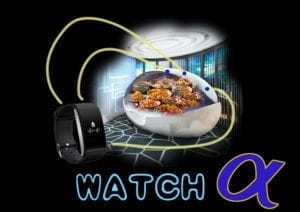Now my understanding of interaction is that it is an reciprocal action of one party to another’s act. The act may take any form while the response might be instant or not. The quality of interaction raises if it is a two-way effect and involve more objects.
One project which to some extent shift my understanding of interaction is Calla (Stavropolous). It is an online platform for community problem solving. It enables residents of that neighborhood to announce their problems (e.g. suspicious issues, crime, social issues) and create pins on the map indicating location and type of that problem. Then local organizations and groups who are responsible can come access those problems more efficiently. It also helps members to organize meetings and enables similar solution browse for similar issues. First I assume this is not a good interaction project as personally I think this is more like a platform for communication. And once a problem is announced, there’s no guarantee that any group would give an instant reply or give out a satisfactory solution. As I used to define interaction as mutual action in which one party is triggered by the act of the other party and acts as a result. I thought communication only is not enough since that time I didn’t consider communication as a way of interaction and doubt whether there would be a solid result. Compared with Calla, Raquel Kogan’s work XYZ in 2011 seems for me that time more like a typical interactive art work. Having three parameters of the human body generating your own soundtrack, one’s height becomes the timbre, pulse the rhythm and weight the pitch. So the action of standing onto the detecting area triggers all effects. Nothing would happen if someone enters the room and does nothing.
But later when I turn back to Manovich’s (29) article and realize “any form of communication requires a discrete representation”. Human language as a prototype can be “discrete on most scales” (Manovich, 29). So if we discrete communication in another way it is clear that communication is one form of interaction since one speaks and then the other person responses with other words. Since it is usually two-way and often arouse other interactive acts (e.g. call a waiter to bring the menu), communication is actually a better form of interaction. Consider what Calla does, even it is just a platform for communication about community problem solving, it still contributes to reciprocal responses on those posted problems and may lead to later solutions in reality. So Calla actually aligns better to the definition of interaction. For XYZ, it is more like a one-way causal reaction. In “Physical Computing’s Greatest Hits (and misses)”, Tigoe makes it clear that the video mirrors are not “much structured interaction” cause they’re simply “mirroring one’s act”. Though XYZ already turns the data it detects into a soundtrack, it is somehow like the mirror as it does not have any effect on the first object. So in this sense, XYZ aligns less well to the definition.

Our Watch Alpha takes in the user’s physical health status (e.g. pulse, temperature, sweating or not, cough or not) and catches his/her language while talking to the final analysis. And responses with a most fitted meal for the user considering his/her health status, needs and wants. We want the device to interact with one’s unnamed wants and needs and satisfy them with food since food for us are something has real effect on a person. For real effect, we mean that even the user does not come up with any responsive feelings or thoughts on that meal/dish, at least it still has physical effects. When a person eats something, it can arouse certain emotions, calls back memories, help strengthen the body or just simply satisfy one’s empty stomach. In all means, having cooked food as a response provides a both-side interaction. This device can also communicate with the user under specific circumstances so their needs are more clarified and valued.
Works Cited:
Heinzelmann, Fergs. “Raquel Kogan Turns User Interactions Into Human Landscapes.” Vice, 13 Dec. 2012, www.vice.com/en_us/article/kbgjx9/raquel-kogan-turns-user-interactions-into-human-landscapes.
Manovich, Lev. The Language of New Media. MIT Press, 2001.
Stavropolous, Steven, director. Calla: A Tool for Dialog and Action. College for Creative Studies, www.collegeforcreativestudies.edu/academics/graduate-programs-mfa/interaction-design/student-work#galleryVideo123152-325.
TIGOE. “Physical Computing’s Greatest Hits (and Misses).” TIGOE, 27 July 2008, www.tigoe.com/blog/category/physicalcomputing/176/.